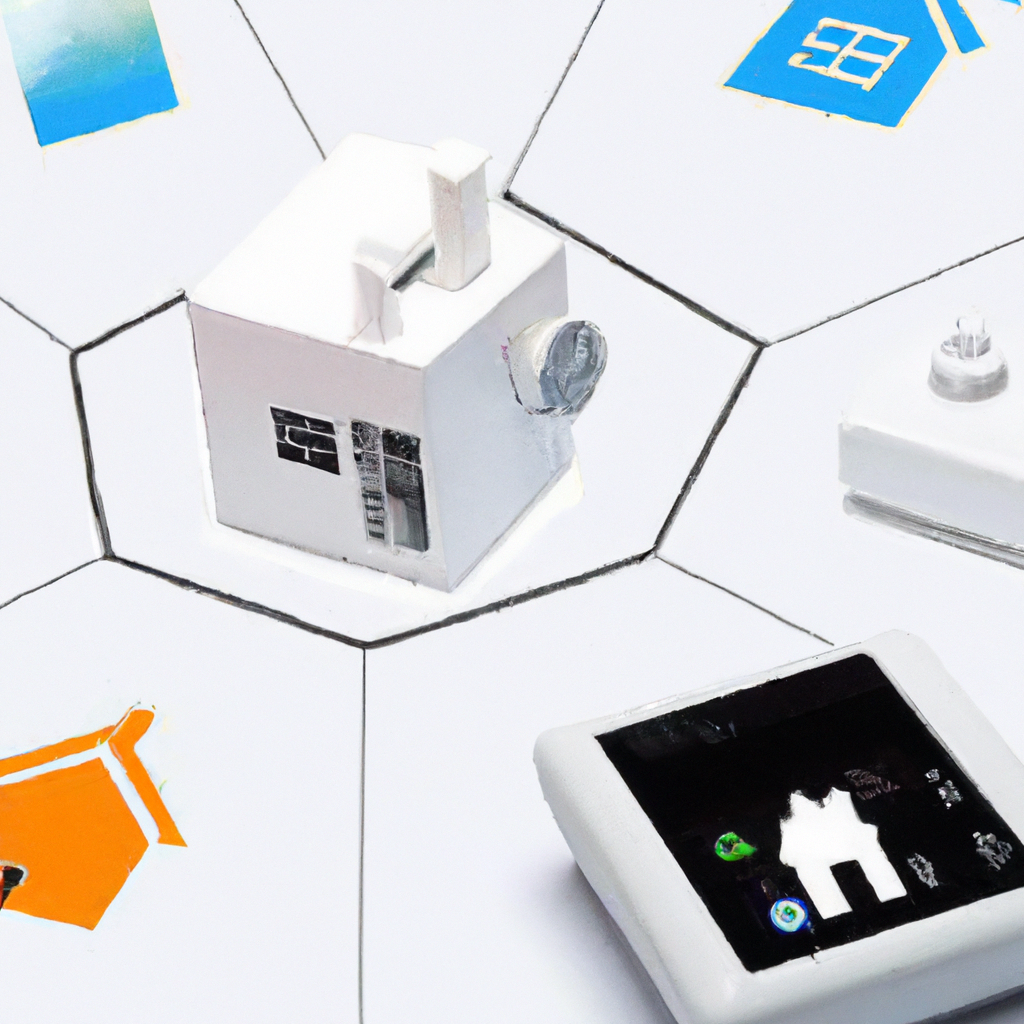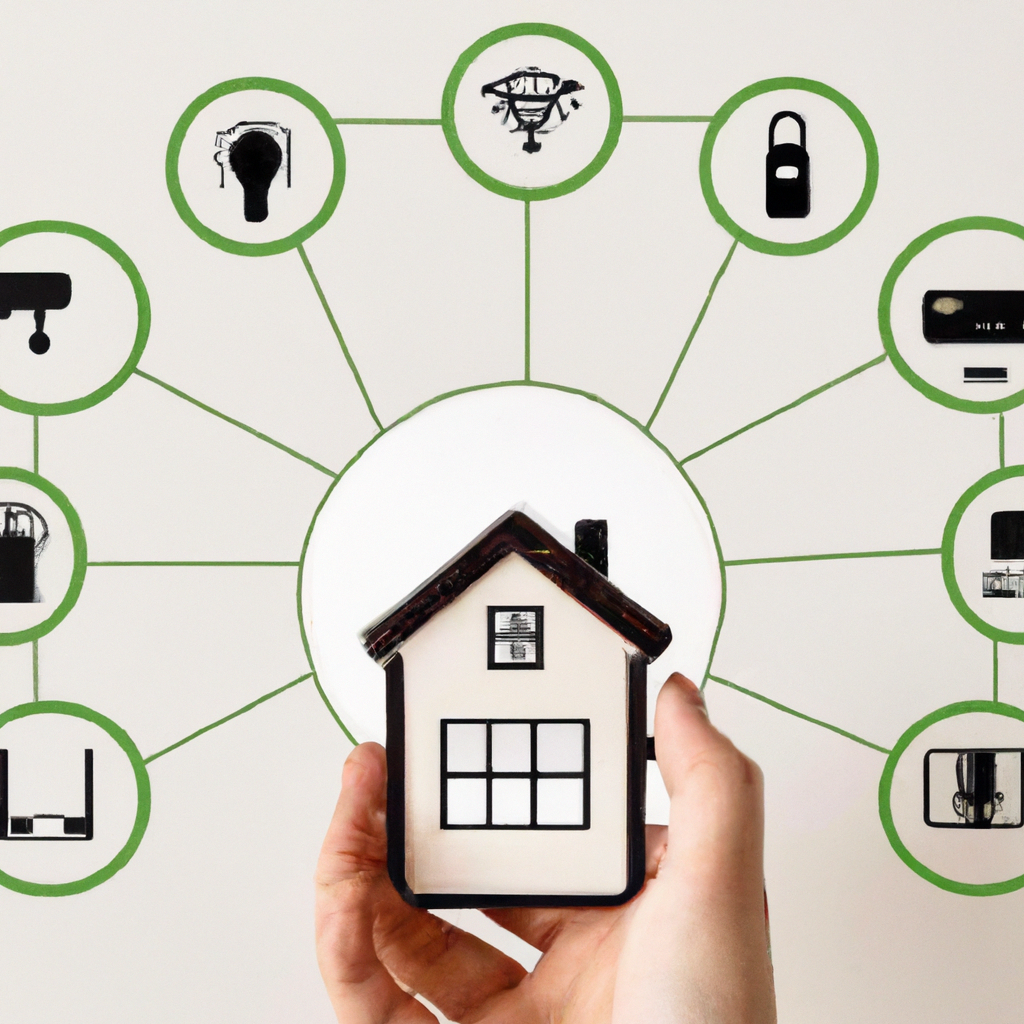Imagine being able to control your lights, temperature, and security system with just a tap on your smartphone. Not only does smart home automation provide convenience and peace of mind, but it can also lead to significant cost savings. With the ability to monitor and manage your energy usage efficiently, you can reduce your monthly bills and contribute to a more sustainable future. In this article, we will explore the various cost-saving advantages of smart home automation and how it can revolutionize the way you live. Get ready to embrace the future of home management!
Energy Efficiency
Reduced electricity consumption
One of the biggest cost-saving advantages of smart home automation is the reduced electricity consumption. With the help of smart devices and sensors, you can easily monitor and manage your energy usage. Smart plugs, for example, allow you to remotely control and schedule the operation of your electronic devices. By turning off devices that are not in use or setting specific operating hours, you can significantly reduce your energy consumption and lower your electricity bills.
Optimized heating and cooling
Another area where smart home automation can help you save money is in optimizing your heating and cooling systems. Smart thermostats, equipped with learning algorithms, can automatically adjust the temperature settings based on your preferences and habits. They can also detect when you are away from home and adjust the temperature accordingly to avoid unnecessary heating or cooling. By efficiently managing your HVAC systems, you can significantly reduce your energy usage and lower your monthly bills.
Efficient lighting management
Smart home automation also offers efficient lighting management, which contributes to cost savings. With the use of smart lighting systems, you can remotely control and schedule the operation of your lights. This ensures that lights are only turned on when needed and turned off when no one is in the room. Additionally, smart lighting systems often use energy-efficient LED bulbs, reducing electricity consumption further. By optimizing your lighting usage, you can save a considerable amount of money on your energy bills.
Water Conservation
Smart irrigation systems
Smart home automation can also help conserve water, resulting in cost savings. Smart irrigation systems use weather data and sensors to determine the optimal watering schedule for your lawn and garden. By only watering when necessary and adjusting the amount of water based on current weather conditions, these systems reduce water waste and prevent overwatering. This not only helps you save money on your water bills but also contributes to water conservation efforts.
Leak detection and prevention
Leaks in your plumbing system can lead to significant water waste and costly water damage repairs. Smart home automation offers leak detection and prevention systems that can help you detect leaks as soon as they occur and automatically shut off the water supply to prevent further damage. By detecting and addressing leaks promptly, you can avoid expensive repairs and reduce your water consumption, contributing to cost savings in the long run.

Appliance Management
Power monitoring and control
Smart home automation allows you to monitor and control the power usage of your appliances. With smart plugs and power monitoring devices, you can track how much energy each appliance consumes and identify potential energy vampires – devices that consume power even when they are not in use. By being aware of your energy consumption patterns and taking necessary actions, such as unplugging idle devices or replacing inefficient appliances, you can lower your electricity bills and save money.
Improved appliance lifespan
Another cost-saving advantage of smart home automation is the ability to improve the lifespan of your appliances. Smart technologies, such as power surge protection and voltage regulation, can help protect your devices from power spikes and fluctuations. Furthermore, by monitoring the performance of your appliances, you can detect any issues or malfunctions early on and take necessary maintenance steps to extend their lifespan. By avoiding premature appliance failures and replacements, you can save money in the long term.
Optimized Home Security
Remote monitoring and surveillance
Smart home automation provides convenient remote monitoring and surveillance capabilities, enhancing your home security. With the use of smart cameras, door sensors, and motion detectors, you can monitor your home in real-time from anywhere using your smartphone or computer. This allows you to keep an eye on your property and take immediate action if any unusual activity is detected. By proactively preventing break-ins or addressing security threats promptly, you can potentially avoid losses and reduce the financial impact of security incidents.
Reduced home insurance premiums
Investing in smart home automation can also lead to reduced home insurance premiums. Many insurance companies offer discounts to homeowners who have security systems in place. By enhancing your home security with smart technologies, you can demonstrate to your insurance provider that you have taken measures to protect your property. This may result in lower insurance premiums and long-term cost savings.

Effective Time Management
Automated household chores
Smart home automation allows you to automate repetitive household chores, saving you valuable time and effort. For example, robotic vacuum cleaners can clean your floors automatically, eliminating the need for manual vacuuming. Smart laundry machines can be programmed to start and finish the laundry cycle at specific times, allowing you to manage your other tasks more efficiently. By automating these chores, you can free up time for more important activities and improve your overall productivity.
Remote control and scheduling
In addition to automated chores, smart home automation offers remote control and scheduling capabilities for various household tasks. You can remotely control your appliances, such as turning on the oven to preheat on your way home or starting the dishwasher while you are at work. Scheduling features allow you to set specific times for tasks to be performed, such as programming the coffee maker to brew a fresh pot every morning. By effectively managing your tasks through automation and remote control, you can make the most of your time and optimize your daily routines.
Smart Thermostats
Energy-efficient temperature control
Smart thermostats play a crucial role in energy efficiency and cost savings. These devices allow you to control and adjust the temperature settings of your home from anywhere using your smartphone. By optimizing temperature settings and avoiding excessive heating or cooling, you can reduce your energy consumption and lower your utility bills. Smart thermostats often come with energy-saving features such as learning algorithms that analyze your usage patterns and suggest adjustments for maximum efficiency.
Learning algorithms for cost savings
One of the key advantages of smart thermostats is their ability to learn and adapt to your preferences and habits. These devices use advanced learning algorithms to analyze your temperature settings, occupancy patterns, and weather data to create an optimal heating and cooling schedule. Over time, they can automatically adjust the temperature based on your habits and the external conditions, maximizing energy efficiency and resulting in cost savings. By relying on these algorithms, you can enjoy a comfortable indoor environment while saving money on your energy bills.

Usage Insights and Analytics
Detailed consumption data
Smart home automation provides detailed consumption data that gives you valuable insights into your energy and water usage. By accessing this data through your smartphone or computer, you can understand which appliances or areas of your home consume the most resources. This knowledge allows you to identify areas for improvement and make informed decisions to reduce consumption. By using this data effectively, you can lower your utility bills and achieve long-term cost savings.
Identifying areas for improvement
In addition to consumption data, smart home automation also offers analytics features that help you identify areas for improvement. These features can highlight inefficiencies or anomalies in your energy and water usage patterns, allowing you to take corrective actions. For example, if a particular appliance is consuming excessive energy, you can investigate the issue and make necessary adjustments or repairs. By recognizing areas for improvement and implementing appropriate measures, you can optimize your resource usage and save money.
Remote Home Monitoring
Alerts for unusual activity
Remote home monitoring capabilities offered by smart home automation systems provide alerts for any unusual activity or events in your home. For example, if a door or window is opened unexpectedly or if a smoke detector is triggered, you will receive instant notifications on your smartphone. These alerts allow you to quickly respond to potential emergencies and prevent further damage. By addressing situations promptly, you can minimize repair costs and protect your home from significant financial losses.
Cost reduction through prevention
By investing in remote home monitoring, you can also reduce costs through prevention. For instance, a water leak detection system can immediately notify you in case of a leak, enabling you to take immediate action to mitigate the damage. By resolving the issue early on, you can avoid costly repairs and minimize water waste. Similarly, early detection of security breaches can help prevent theft or property damage, saving you from the financial burden associated with such incidents. Through prevention, remote home monitoring contributes to cost savings and peace of mind.

Reduced Maintenance Costs
Timely equipment diagnostics
Smart home automation systems can provide timely equipment diagnostics, helping you identify potential issues or malfunctions with your appliances and systems. For example, if there is a problem with your HVAC system, you will receive alerts and diagnostic information through your smartphone. This allows you to address the issue promptly, either by performing minor repairs or calling an expert before the problem escalates. By addressing maintenance needs in a timely manner, you can avoid costly breakdowns and prolong the lifespan of your equipment.
Preventive maintenance reminders
Smart home automation systems can also send you preventive maintenance reminders for your appliances and systems. These reminders ensure you stay on top of routine maintenance tasks, such as changing filters or scheduling professional inspections. By adhering to a regular maintenance schedule, you can prevent potential issues and keep your appliances and systems in optimal condition. This reduces the risk of unexpected breakdowns, saves you from expensive repairs, and extends the lifespan of your equipment.
Integration with Renewable Energy
Optimizing solar panel usage
If you have solar panels installed in your home, smart home automation can help you optimize their usage. By integrating your solar panels with your smart home system, you can monitor their performance in real-time. This includes tracking the amount of energy generated and consumed, as well as the export or import of energy to and from the grid. With this information, you can adjust your energy usage patterns to make the most of your solar panels and reduce your reliance on grid-supplied electricity. By maximizing the use of renewable energy, you can lower your electricity bills and contribute to a more sustainable future.
Maximizing energy self-sufficiency
Smart home automation offers opportunities to maximize your energy self-sufficiency, especially when combined with renewable energy sources. By integrating your solar panels, batteries, and smart energy management systems, you can store excess energy generated by your solar panels and use it during peak demand periods or when the sun is not shining. This reduces your reliance on grid electricity and allows you to further lower your energy costs. By taking advantage of these integrated systems, you can achieve a higher level of energy independence and enjoy greater cost savings.
In conclusion, smart home automation offers a wide range of cost-saving advantages. From energy efficiency and water conservation to improved home security and effective time management, these systems provide numerous benefits that contribute to financial savings. By effectively utilizing smart devices, remote monitoring capabilities, and advanced analytics, homeowners can lower their energy bills, reduce maintenance costs, prevent potential issues, and optimize their resource usage. Moreover, integration with renewable energy sources further enhances cost savings and promotes sustainability. Investing in smart home automation not only improves the comfort and convenience of your home but also helps you achieve significant long-term financial benefits.











